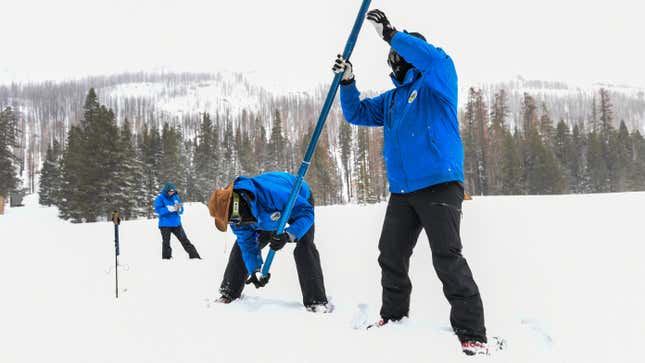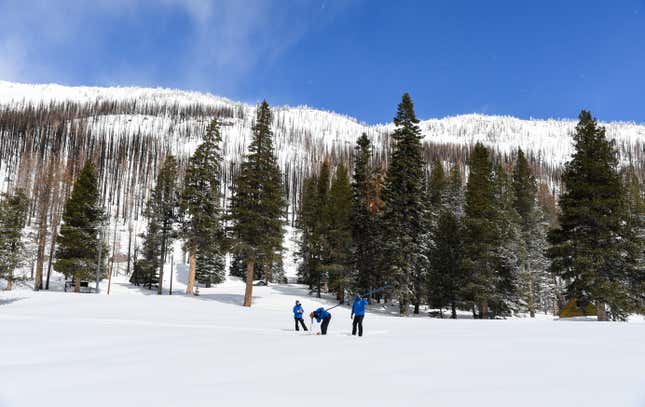
After an unexpectedly wet winter marked by consecutive storms in California, the state’s snowpack is now one of the highest that officials have ever documented.
On Monday, California Department of Water Resources officials went to Phillips Station, just south of Lake Tahoe, to conduct the end-of-winter snowpack survey. They found 126.5 inches of snow depth during the manual survey, which is a whopping 221% of average snow levels for this time of year, the department said in a statement.
“This year’s result will go down as one of the largest snowpack years on record in California,” Sean de Guzman, manager of DWR’s Snow Surveys and Water Supply Forecasting Unit, said in the release. He also noted that it may be hard to say if the measurements are officially the largest recorded, because there were fewer surveys back in the 1950s to compare to recent years.
However, snow level results from the statewide snow sensor network are higher this year than any other reading since the network was established in the 1980s, the department said. And the Southern Sierra snowpack is especially impressive this year—it’s currently at 300% of its April 1 average.

This year’s early spring snowpack survey stands in stark contrast to the situation last year, when staff found just 2.5 inches of snow near Lake Tahoe. The average snow depth for the end of winter is supposed to be about 5 feet, according to the department. At the time, officials were worried about the lack of snowpack, since there wouldn’t be enough snowmelt to replenish the dwindling water levels in state reservoirs.
“This year’s severe storms and flooding is the latest example that California’s climate is becoming more extreme,” Department of Water Resources Director Karla Nemeth said in the press release. “After the driest three years on record and devastating drought impacts to communities across the state, DWR has rapidly shifted to flood response and forecasting for the upcoming snowmelt. We have provided flood assistance to many communities who just a few months ago were facing severe drought impacts.”
Officials are very concerned about potential flooding, especially in the Southern San Joaquin Valley area. To combat this, the department’s State-Federal Flood Operations Center (FOC) has provided specialists to support long-term flood response planning in vulnerable areas.

